


Framed or unframed, desk size to sofa size, printed by us in Arizona and Alabama since 2007. Explore now.
Shorpy is funded by you. Patreon contributors get an ad-free experience.
Learn more.

- A Beautiful Moment
- Such joy
- Bethune-Cookman University today...
- Yellow sky at morning
- Side Winder
- Air Quality?
- Sojourner Truth riot
- None were so blind(ed)
- The less famous sister
- Good ol' days?
- Rise and Fall
- Goo Goo Ga Joob
- Ticket Retention
- Not the only one
- Vagaries of War
- Killed by Amtrak
- Back to the Future
- Wanted --
- If you can't stand the light
- Centralized Traffic Control, I believe
- What's really happening
- Heckuva remote control!
- Sometimes — Things Go Bump!
- I SEE THE LIGHT
- Union Switch and Signal Company
- Get That Light Out Of My Eyes
- Eggs. Eggs. Eggs. The Egg Man is Here!
- Foreboding caption
- Famous Hollywood faces
- Not just S&P
Print Emporium
Tankar Gas: 1937
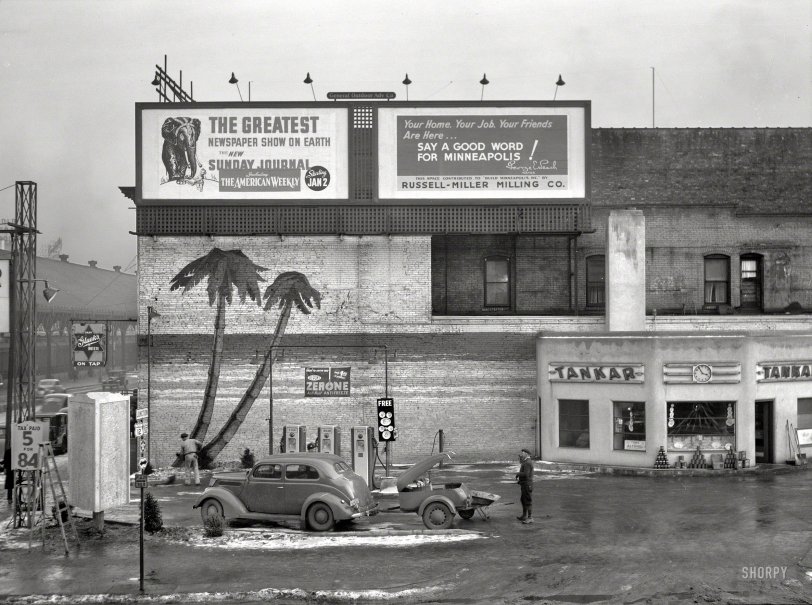
December 1937. "Gas station in Minneapolis." The Minnesota tropics, where snow dusts the painted palms. Photo by John Vachon. View full size.
Tankar
Looks like they redid the palm tree mural in the 1940s. The photo below is from the Zalusky Collection.
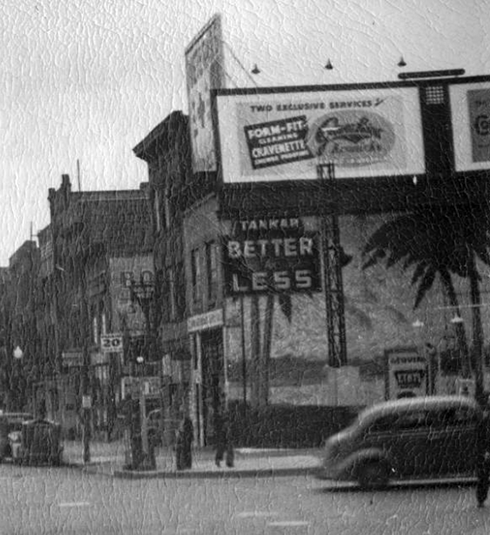
3rd and Washington
This confirms that it was on 3rd and Washington. No doubt that is the Tankar building in a sea of parked cars. How it survived "urban renewal" and the rest of the buildings didn't is beyond me.
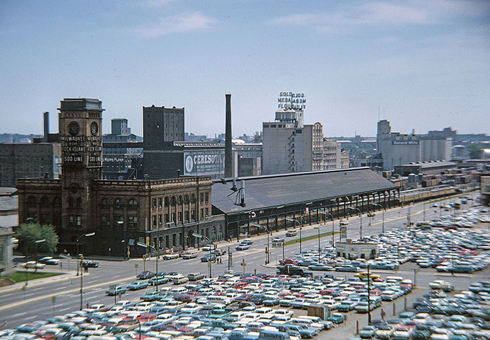
Tax? Which?
I'm still bewildered by the sign "TAX PAID 5 FOR 85"
I've arrived at no meaningful interpretation for that.
Somebody help me out, please.
Perhaps a chimney?
I thought the "substantial concrete column (green oval)" that Splunge mentioned was a chimney for a heater or fireplace in the gas station's office below.
BTW, I don't have any horses to be concerned about, but I do enjoy the friendly banter and explanations offered. Sometimes it's very helpful to see something from another's viewpoint.
Thanx to all that have commented!
Love the billboards
I found the billboards very interesting. I grew up 40 miles north of Minneapolis. The Minneapolis Journal or Sunday Journal was published until 1939 when it merged with the Minneapolis Star to become the Minneapolis Star-Journal. Other mergers took place and today it's the Star Tribune. The American Weekly was a Sunday Supplement, published by Hearst, inserted into the Sunday Journal. It was published until 1966. The Russell-Miller Milling Company at this time made Occident Flour and was headquartered in Minneapolis. In the early 1950's it become part of the Peavey Co., which in turn was bought by ConAgra in 1982.
Re re Frost shields
No electricity involved, Don Struke. The classic frost shield is a rectangle of plastic stuck by adhesive at its perimeter to the auto glass. You put them on the inside of the window, and the vacuum created between the plastic shield and the glass kept the window free from condensation and frost. I’ve heard of a fancier kind made of glass with a rubber gasket, but no one I knew used these.
Once when my dad was in the Southern states with his Canadian frost shields on, a gas attendant asked him if it was bullet-proof glass.
Re: Trainshed
The trainshed always ended at 5th Avenue, but the yard continued to Chicago Avenue where a large viaduct took the tracks across Washington. If you look at the aerial photo in Splunge's comment, you can see that the shed ends at 5th, but only Portland Avenue crosses the yard.
Re Frost shields
Hard to tell from the ad davidk provided (or even if that model is what I'm about to describe), but in the mid-30s rectangular defrosters went on the market that were held on the window interior by suction cups. These had exposed thin wires not unlike today's embedded rear window defosters that were electrified either by the car's system or by 6-volt batteries. The ones in the Ford appear to be smaller than what I'm familiar with.
The Gold Medal Sign
It turns out you can see it in Street View, from 3rd Street at Washington:
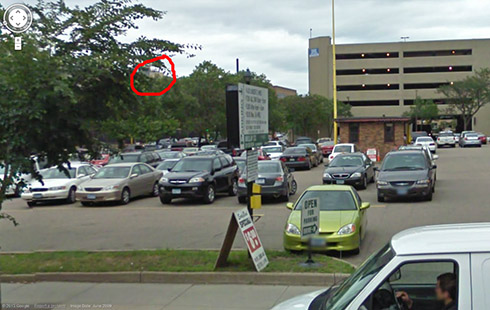
Trainshed
What may be confusing you is that the Milwaukee Depot Trainshed has been shortened and there are cross streets there now that were not there when the photo was taken at which time it was a active depot.
[The cross streets are the same. This is Third Avenue crossing Washington, in a view seen here two years ago. The clock tower still stands. - Dave]
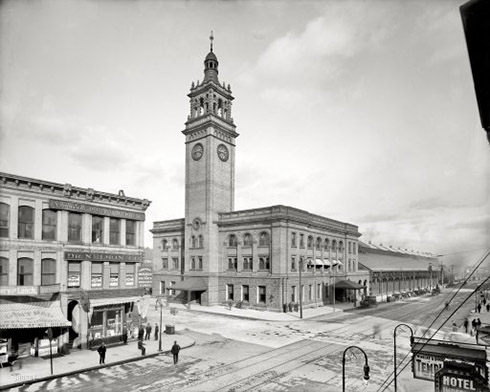
Cut-Rate
Tankar was apparently a low-price chain headquartered in Minneapolis. Some of the stations had old tank cars as part of the architecture.
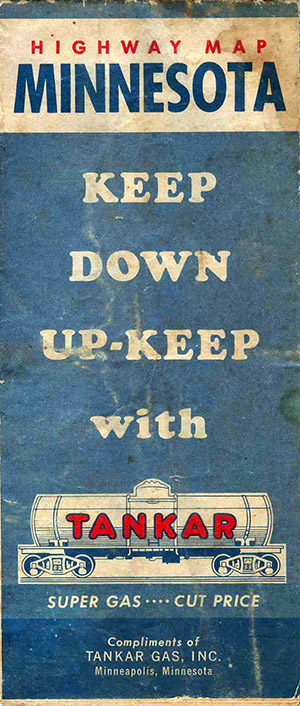
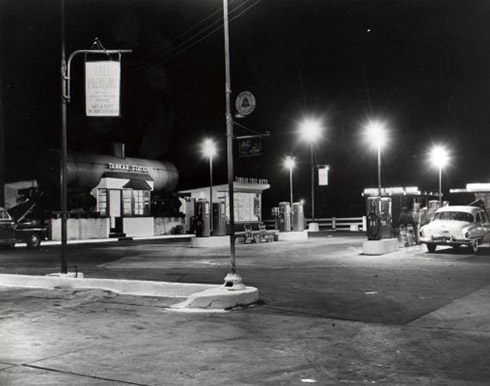
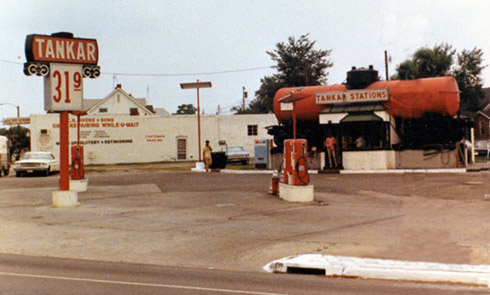
F.A.P. May Be The Key.
The street sign on the left may hold a cryptic key to the puzzle. The sign post clearly indicates one roadway, but at the bottom, facing the camera is a small sign with "F.A.P." or Federal Aid Primary. That sign indicates this road was receiving Federal money as a primary route and would have to be a fairly substantial route. F.A.S. signs for Federal Aid Secondary are sometimes also seen on smaller routes or further out on primary routes that receive less Federal maintenance money. I know nothing about this area, but I hope that little sign now gives you the intersection.
[The sign is pointing you to it -- F.A.P. 92B is to the right. - Dave]
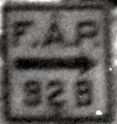
Awesome trailer
Horace T. Water is correct, this is a 37 Ford (Tudor sedan). I have seen trailers like this, but was under the assumption that they were new "retro" designs, not actual period trailers. I found out that somebody is now making fiberglass reproductions.
3rd and Washington
The train shed is the tip-off. If the Google street view were from second story rather than - uh - street level, you could then see the Gold Medal Sign. BTW, the Gold Medal sign has been moved around a bit since 1937 due to a fire at the "A" Mill and restoration of the Mill Ruins Museum.
Along with
the previous busy comments in the scene, note the worst job of bricklaying behind the palm trees, and the Tax Paid sign, AND Glueks Beer on Tap.
Trailer
Isn't anybody going to mention that fantastic, streamlined trailer? Homemade or manufactured and its got to belong to that Mark Trail looking guy puffin' on his pipe.
[See the very first comment below. - tterrace]
One modern convenience
Based on the bare bulb visible through the dirty window, I'm thinking it's not the Ritz Carlton; but somebody in that building has a mighty fine radio antenna on the roof... a fairly long dipole, likely to receive AM broadcasts.
I think Dave is correct.
The Milwaukee Road train shed ends at 5th Avenue South and Washington. Gold Medal Flour is at about 700 West River Parkway. The gas station would have to be at 3rd or maybe 4th Avenue South. This area on either side of Washington Avenue from Hennepin to 11th Avenue was known as the Gateway district. About 40 blocks were cleared for urban renewal in the 50s and 60s. Only in the last 10 years has the sea of parking lots started to fill in.
Thanks davidk
I was just about to ask if anyone knew what that rectangle was on the driver's side window.
Plus 76?
After spending far too much time digging, I can offer what might be (approximately) the present-day view, with about 80-90% confidence:
The "Gold Medal Flour" sign that's barely visible on the left of the 1937 photograph is a big clue to the location. It's not visible from the Street View above due to new construction - but if you back out to the 45 degree view and head about two blocks southeast and one block northeast, you'll see it. It's also hard to tell from the sometimes-grainy Street View magnifications, but I'm fairly certain that the most of the brickwork is the same as 1937, although they did brick in the upstairs area.
[For the depot shed to be on the left as in the 1937 photo, I think we'd need to be a block or two west of 5th Avenue, around 3rd and Washington. The 1940 map below shows the outline of the gas station office facing 3rd, which was a major thoroughfare crossing the Mississippi. - Dave]
[I won't dispute your map, but I have trouble seeing how the Gold Medal Flour sign would be both visible and aligned as it is in the 1937 photo if the camera was that far west. There are also some features of the brickwork, including the distinctive offset about 12 feet up on the left edge, that make me go "hmmm."]
[The sign, atop a six-story flour mill, is visible from most of downtown Minneapolis. Also, our photo was taken from the second floor as opposed to Google's ground-level Street View. Plus that building at 5th and Washington doesn't look anything like the one in our view, in addition to being set back much farther from the curb. It's three stories tall as opposed to the two-story building in the 1937 photo. - Dave]
[I concede. I found a 1937 aerial photo of the area (see below), and the corner of Third and Washington looks far more likely to be the spot than the corner at Fifth. When I'm looking for a historical spot like this, I try not to make any assumptions - such as "in the past 70+ years, they didn't brick in the open second story" or "they didn't build an addition" or "there was no third story hiding behind the billboards" or "that train depot never extended past Fourth Avenue." Now that I have photographic evidence, I'm fine with admitting I was wrong.]
[You can tell there's no third floor just by looking at the photo. The cornice is at the bottom of the billboard. Plus you can see there's nothing behind them through the latticework between them. And in any case they're not tall enough to hide a third floor. - Dave]
[I realize I'm now beating a dead horse, but your last comment makes it sound unreasonable to think there's a third floor. What I see through the latticework is a brick wall (red oval). That wall appears to be supported by a substantial concrete column (green oval) - either that, or this is an Escherian building. That leaves about 10-12 feet of space to be a "third floor" (cyan oval). With some added brick and a few layers of paint, there is no reason this edifice could not resemble what's currently at the corner of Fifth and Washington. (Note that I am not arguing that it is that location (I agree it's at Third), I am simply pointing out that it is perfectly reasonable to think that there is - or could be - a third floor here.)]
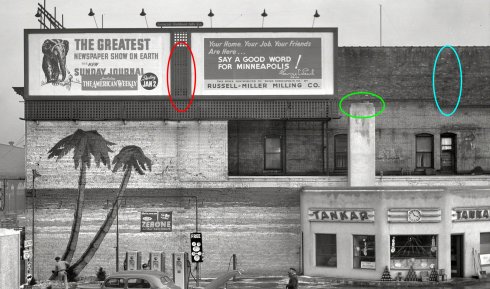
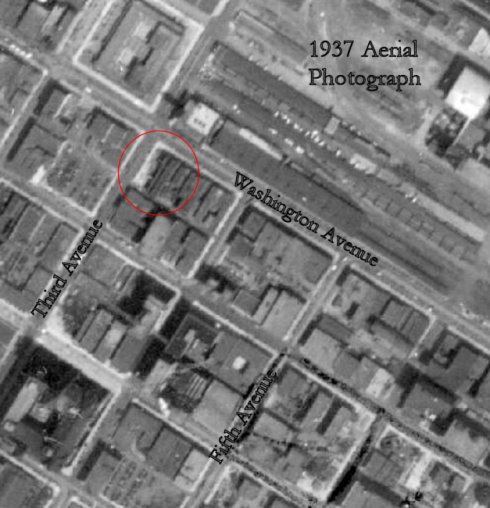
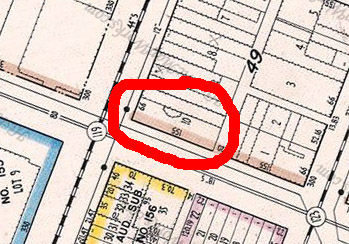
Frost shields
The application of frost shields used to be mandatory in Winnipeg on the windshield (unless the car had a defroster), rear window and front-row side windows from November 1 through March 31. The ad below from my hometown paper, the Free Press, is from 1952. There is still a company in Manitoba that manufactures them for use in construction vehicles, helicopters and outbuildings.
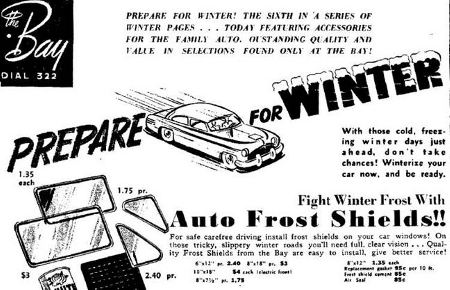
Tag Along
1937 Ford with a Mullins Red Cap trailer.
























On Shorpy:
Today’s Top 5